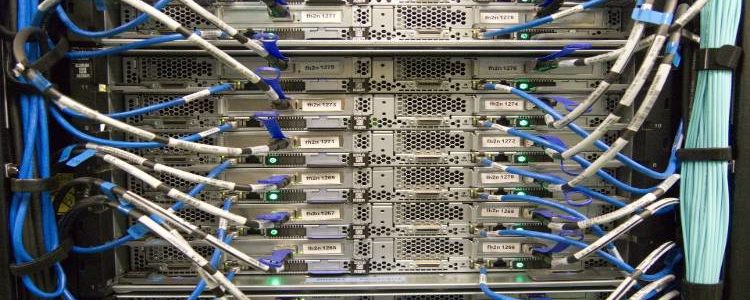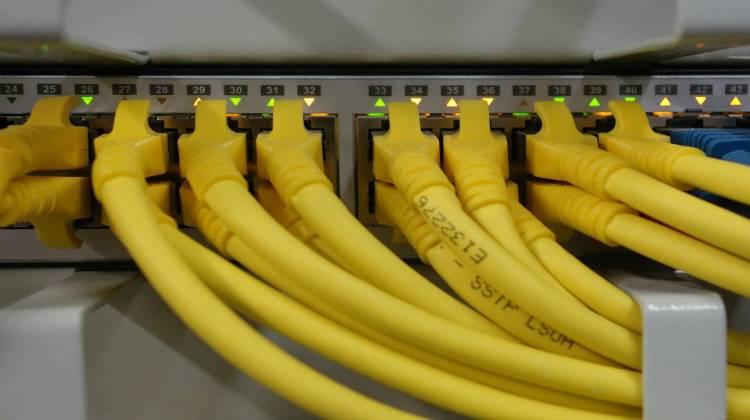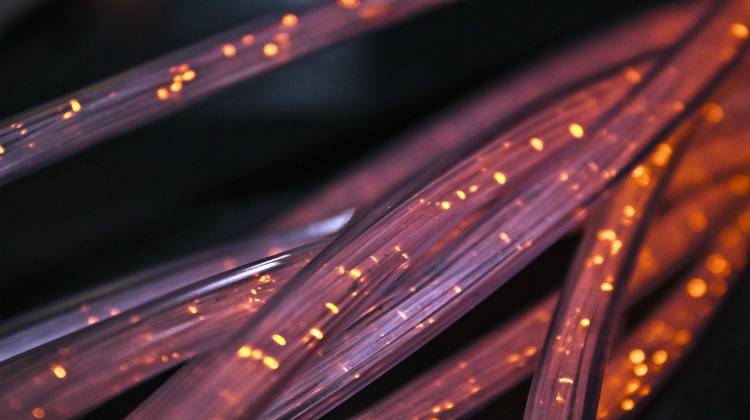Data cables are the backbone of computer and telecommunication systems. In your office, you’ll rely on network cables to carry data to and from computers, switches, and routers.
If you’re looking to start a business, relocate your premises or need a long-overdue upgrade, your network cabling has to be right. There are different kinds of communication cables available, so carefully consider which are right for your business.
Why do we need data cables?
In their most basic definition, cables conduct either signals or power. In the business world, they are used to transmit electronic information from source to destination: between servers, computers, phones, Wi-Fi or even CCTV cameras.
While we’re moving towards wireless communications, we still rely on wired systems to get us there. To get the internet to where it is today, we rely on cables that run underground (and sometimes underwater). There are over 550,000 miles of cabling across the world to thank for the connectivity we enjoy today.
Different classes of cable
Cables are made by bundling individual wires together. These conductors are made with either copper or glass. While there are multiple cable types currently used for data and telecom network cabling, they fall into three distinct classes:
- Coaxial cable (copper)
- Twisted-pair cable (copper)
- Optic cable (fibre)
Which class the cabling falls into depends on what material carries the electrical signals (the transmission media) and how the transmission medium is shaped.
Coaxial cable
Coaxial (coax) cable uses copper as its transmission medium. It’s rarely seen in computer data networks today. It’s mostly reserved for use in older computer networks and is still used for many TV and radio applications.
While coax cable has a high bandwidth, the signal attenuates at a much higher rate and causes the signal to lose strength. Over long distances, the signal may distort and, at worst, become indiscernible. This has limited the use of coax cables in communication to short-range applications such as digital telephone networks and some older CCTV systems.
Twisted-pair cable
Twisted-pair cable also uses copper as a transmission medium. The difference is how it is structured – multiple pairs of copper wires are twisted around each other to reduce the influence that outside interference has on the signal degradation.
Twisted-pair cable is the standard ‘network cable’. If you currently run ethernet cables in your office, chances are they are twisted-pair. Twisted-pair cables have been developed in seven categories, with some of the most relevant to modern communications being:
- Cat5 cabling: A cost-efficient solution. This is the type of cabling we typically recognise as an ethernet cable. Slowest speed; can carry signals at speeds of 1 Gbps over as far as 100 metres.
- Cat6 cabling: This is an improvement on Cat5 cabling, but does come at a higher cost. Faster speed; can carry signals of 10 Gbps over distances up to 55 metres.
- Cat7 cabling: A further improvement. This cable type is good for high-speed applications or for use in high-interference environments due to its shielded cables.
Fibre optic cable
If your budget can stretch further or it is critical that you need the highest speeds, fire optic cabling is worth considering. It’s the most advanced option, but it does come at a price.
Fibre optic cabling works by transmitting data via light rather than electricity. This is done by drawing glass or plastic into long fibres, barely thicker than the size of a human hair. Transmitting data by light means faster internet connections and much higher bandwidth are possible. It also means that the signal can be transmitted over very long distances with little degradation – some can carry 10 Gbps signals over distances of up to 10 km.
Companies looking to modernise and move their data storage into the cloud may want to consider fibre optic cables. Currently, it’s estimated that over 80% of businesses use cloud services in some capacity. This means you need a lot of people being able to access a lot of information simultaneously. Fibre optic cable allows the fastest access to anything stored in the could. Even when there is high demand, there is no loss in speed for your employees.
What do I need to consider when choosing data cabling?
To identify which cabling is right for your business, there are a number of factors to consider:
- Your hardware bandwidth and speed requirements. For example, if you have a requirement for a 10GB connection over 50 metres, Cat5 simply won’t cut it. Your hardware won’t be able to perform at its required levels at anything under Cat6.
- Your budget. Shielded, high-speed cabling is more expensive than low-speed cabling. To make sure you’re buying the correct cabling, identify the bandwidth capabilities and distances that your business needs. Think about what you need now and in the near future, as your bandwidth needs will grow as your business does.
- Quality and safe installation. Poorly installed network cabling can cause a whole host of problems and presents very real safety risks. There are regulations and legal standards in place that must be met, so data network installation should only be done by trained professionals.
Data cabling is not one-size-fits-all. There is no blanket rule for which data cabling is best, so consider the requirements of your business now and in the future and consult a professional to determine which data cabling is best for your business.
Computers in the City, your IT partner
Computers in the City is London’s longest-standing IT partner. With over 20 years’ experience, we can assist you to meet your IT support, consulting and cloud computing needs. We’re proud to be local, offering 24-hour support in straightforward language that takes the stress out of IT support.


